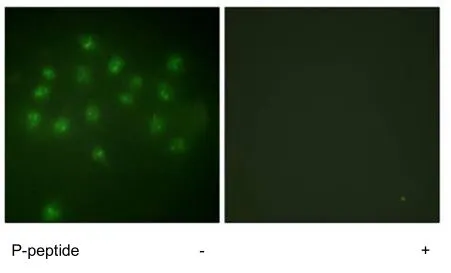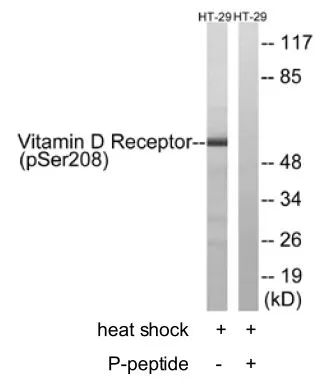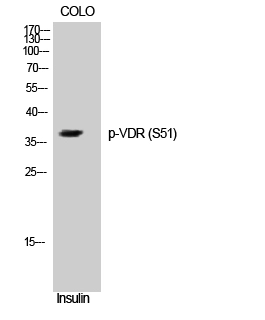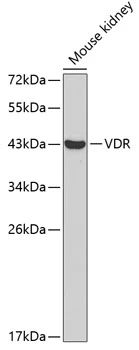
ICC/IF analysis of A549 cells using GTX52380 Vitamin D Receptor (phospho Ser208) antibody.
Vitamin D Receptor (phospho Ser208) antibody
GTX52380
ApplicationsImmunoFluorescence, Western Blot, ImmunoCytoChemistry
Product group Antibodies
TargetVDR
Overview
- SupplierGeneTex
- Product NameVitamin D Receptor (phospho Ser208) antibody
- Delivery Days Customer9
- Application Supplier NoteWB: 1:500 - 1:1000. ICC/IF: 1:100 - 1:500. *Optimal dilutions/concentrations should be determined by the researcher.Not tested in other applications.
- ApplicationsImmunoFluorescence, Western Blot, ImmunoCytoChemistry
- CertificationResearch Use Only
- ClonalityPolyclonal
- ConjugateUnconjugated
- Gene ID7421
- Target nameVDR
- Target descriptionvitamin D receptor
- Target synonymsNR1I1, PPP1R163, vitamin D3 receptor, 1,25-dihydroxyvitamin D3 receptor, nuclear receptor subfamily 1 group I member 1, protein phosphatase 1, regulatory subunit 163, vitamin D (1,25- dihydroxyvitamin D3) receptor
- HostRabbit
- IsotypeIgG
- Protein IDP11473
- Protein NameVitamin D3 receptor
- Scientific DescriptionThis gene encodes vitamin D3 receptor, which is a member of the nuclear hormone receptor superfamily of ligand-inducible transcription factors. This receptor also functions as a receptor for the secondary bile acid, lithocholic acid. Downstream targets of vitamin D3 receptor are principally involved in mineral metabolism, though this receptor regulates a variety of other metabolic pathways, such as those involved in immune response and cancer. Mutations in this gene are associated with type II vitamin D-resistant rickets. A single nucleotide polymorphism in the initiation codon results in an alternate translation start site three codons downstream. Alternatively spliced transcript variants encoding different isoforms have been described for this gene. A recent study provided evidence for translational readthrough in this gene, and expression of an additional C-terminally extended isoform via the use of an alternative in-frame translation termination codon. [provided by RefSeq, Jun 2018]
- Storage Instruction-20°C or -80°C,2°C to 8°C
- UNSPSC12352203






